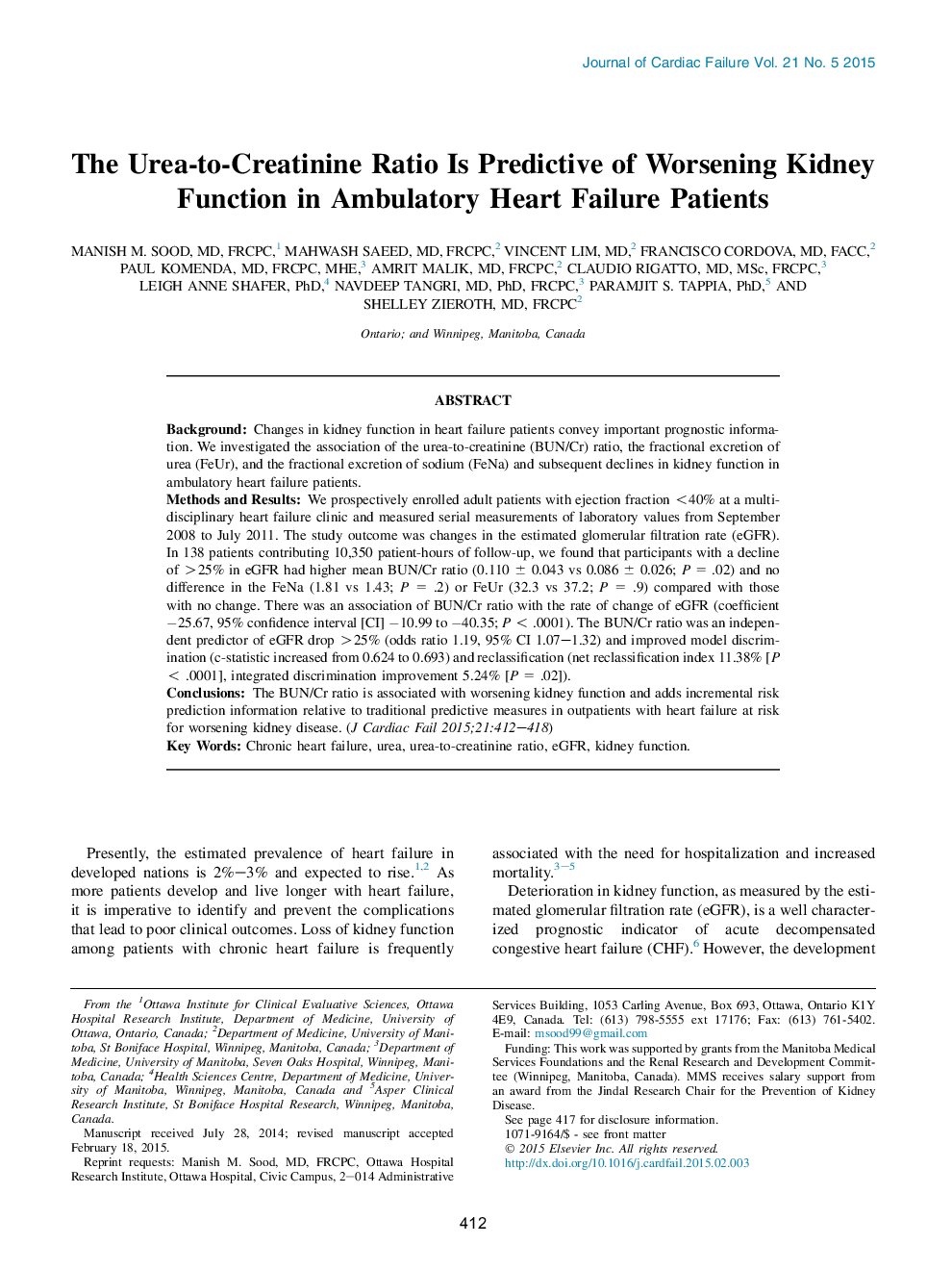| Article ID | Journal | Published Year | Pages | File Type |
|---|---|---|---|---|
| 2958994 | Journal of Cardiac Failure | 2015 | 7 Pages |
•The urea-to-creatinine (BUN/Cr) ratio is associated with subsequent changes in the eGFR of patients with chronic ambulatory heart failure.•The fractional excretion of urea and sodium were not associated with changes in eGFR.•The association varied with the presence of diabetes mellitus and baseline kidney function.•The BUN/Cr ratio is inexpensive, easy to determine, and added incremental risk prediction information compared with traditional measures of declining kidney function.
BackgroundChanges in kidney function in heart failure patients convey important prognostic information. We investigated the association of the urea-to-creatinine (BUN/Cr) ratio, the fractional excretion of urea (FeUr), and the fractional excretion of sodium (FeNa) and subsequent declines in kidney function in ambulatory heart failure patients.Methods and ResultsWe prospectively enrolled adult patients with ejection fraction <40% at a multidisciplinary heart failure clinic and measured serial measurements of laboratory values from September 2008 to July 2011. The study outcome was changes in the estimated glomerular filtration rate (eGFR). In 138 patients contributing 10,350 patient-hours of follow-up, we found that participants with a decline of >25% in eGFR had higher mean BUN/Cr ratio (0.110 ± 0.043 vs 0.086 ± 0.026; P = .02) and no difference in the FeNa (1.81 vs 1.43; P = .2) or FeUr (32.3 vs 37.2; P = .9) compared with those with no change. There was an association of BUN/Cr ratio with the rate of change of eGFR (coefficient −25.67, 95% confidence interval [CI] −10.99 to −40.35; P < .0001). The BUN/Cr ratio was an independent predictor of eGFR drop >25% (odds ratio 1.19, 95% CI 1.07–1.32) and improved model discrimination (c-statistic increased from 0.624 to 0.693) and reclassification (net reclassification index 11.38% [P < .0001], integrated discrimination improvement 5.24% [P = .02]).ConclusionsThe BUN/Cr ratio is associated with worsening kidney function and adds incremental risk prediction information relative to traditional predictive measures in outpatients with heart failure at risk for worsening kidney disease.
